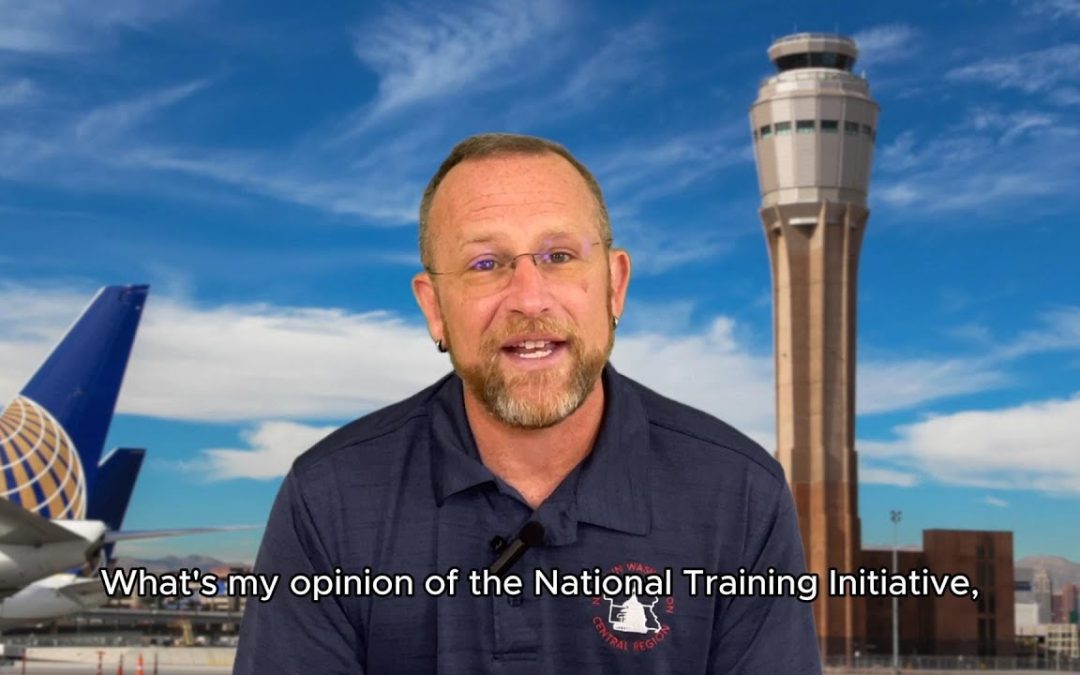NTI… Greatest Initiative Ever?!
Man, had I known that just the mention of the NTI would have literally blown my phone up, I would have started the campaign there! Now, we really weren’t ready to put this video out, it was supposed to come later, but because the demand was so high, we rushed to put this thing together for you. So here we go.
What’s my opinion of the National Training Initiative, or, the NTI?
Let me start by saying this: As a professional, I find that providing OJT to another union member is one of the most gratifying aspects of our profession. Helping another person find and reach their potential, it’s hard, it’s frustrating, and it’s emotionally and mentally tasking. But it’s equally as rewarding. When a trainee succeeds and achieves CPC status, it’s just as heartwarming as it is gut wrenching when someone fails.
But this question is not about me being an OJTI, which I was at Boston Tower for over a decade. It’s about what I think about the agency out of Washington DC taking control of the oversight of facility training.
Now, for my answer to have proper context, you’d have to look at the origins of the NTI. In Article 67 of the CBA NATCA agreed that the agency determines individual training methods and means. So, right out of the gate NATCA’s ability to control the issue is significantly limited by what we signed in the 2016 CBA.
Back in 2019, the agency engaged NATCA with a desire to have a collaboratively agreed to National Training Initiative. The intent was to address the chronic low numbers of CPCs. Mind you, as Rich as shown, we didn’t have a training issue we had a hiring issue, but the agency wanted to talk NTI, so off we went. As the National Training Rep, my opponent in this EVP election was installed as the lead of the NATCA team to engage the agency.
The agency came to the table with the only data that they know or care about: time on position, or TOP. Our team collaborated with the agency and reached an agreement to the amount of TOP that would be the goal of the NTI. And then a bunch of impediments says to why you couldn’t reach the predetermined TOP. So, look, it’s here in instances like this where I feel like collaboration gets tainted.
Most controllers on the floor hate the word and I get it. They feel like collaboration is giving away our rights or giving into every whim and desire of management. In my opinion, collaboration is not the issue, nor is it the cause of any shortcoming.
In New England, we teach and enforce that when our reps are collaborating with the agency, there to look at the issue at hand. They’re not limited in any way to the “answer” that the agency brought to the table. With the NTI, it seems to me that we fell into a discussion with the agency to determine the amount of TOP, what was the right amount of TOP, which is the answer the agency had already brought to the table.
What would I have done differently?
Could the NTI have been different if I was sitting at the table in 2019? That’s hard to tell, but I can assure you this:
the task was not to determine the correct amount of TOP. The task was to find a way to increase certifications. Personally, I would have steered away from TOP. I would have instead looked to answer the questions to “Why?”
Why are trainees not yet consistently training on live traffic? And my records show where I would have been looking. So, as the Boston Tower FacRep, it’s not uncommon for a CPC-IT to get 4 to 5 hours of OJT on every shift. Why? Well, trainees weren’t counted as staffing at Logan. As ARVP and then as RVP, we’ve done other things to improve controller training.
During the K90/A90 realignment, for example, due tothe cross training, the facility was upside down on CPCs versus CPC-ITs. I oversaw signing of a facility-level Article 114 agreement where someone in training would be counted in staffing one day per week. The other four they trained. Pair them up with a trainer and let them run the rotation.
As RVP, I directed my ARVP to engage the General Manager to negotiate a regional training oversight group. That group was to have NATCA and the agency review district wide training. Both the A90 agreement and the Regional Training Oversight Group pre-dated the NTI. It’s my belief that training decisions need to be at the facility level and the oversight needs to be at the regional level. Each facility and region have nuances of seasonal patterns, local cultures, and facility-specific needs that are best handled between the facility and the region.
Facilities and regions do not need cookie cutter, one-size-fits-all decision making. It’s not about having a campaign slogan
talking about grassroots and local control. It’s about ACTUALLY having grassroots and local control.
Uploaded to my website is the NATCA New England Training Rep scope and the A90 Article 114 agreement.
Talk to you soon.

